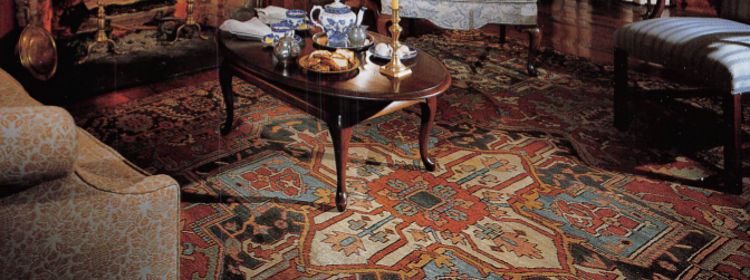 The older rugs are created in Asia, Iran, Turkey, the Caucasus in the 18th century and in an absolutely organic way they were sold and imported to the US. We used them on the floors, lifted by their energy and creativity. But lo and behold, as they wear we start to discover different images, patterns and textures, different colors and soon realize it’s all for the better.
The older rugs are created in Asia, Iran, Turkey, the Caucasus in the 18th century and in an absolutely organic way they were sold and imported to the US. We used them on the floors, lifted by their energy and creativity. But lo and behold, as they wear we start to discover different images, patterns and textures, different colors and soon realize it’s all for the better.
For every 20 years of use, we discover a new image, meaning, texture, color and design, each more beautiful than the previous period. We come to discover that we are collaborators in the channeling of this living form of beauty and human energy.
When they reach their centennial, having lost their nap and the plushness of youth, their true character is revealed; a pencil-point finish disclosing their true character. At that point, it’s easier to recognize the high lever of art that has been hidden for 100 years. Our exposure to education and culture makes this primitive art an absolute joy to live with and experience in both passive and active ways.
This collaborative dynamic warrants that it’s only fair to claim that these rugs, while envisioned and created in Asia, had their manufacturing completed here. We participated fully uncovering the beautiful art that has been hiding dormant underneath. Thereafter this art was made and belongs to the American culture; we discovered their final and beautiful impression here.
Frequently, we are contacted by buyers from Asia, Russia, Turkey, Armenia and Azerbaijan looking to purchase these old pieces to take back and place in their institutions and museums.
But here they will stay. These rugs are still being made now by us in America, they now belong to us in America and should stay to be completed by us in America. We have museums and art galleries but, more importantly, we have homes for them.
Oh, antique rugs – how great thou art.